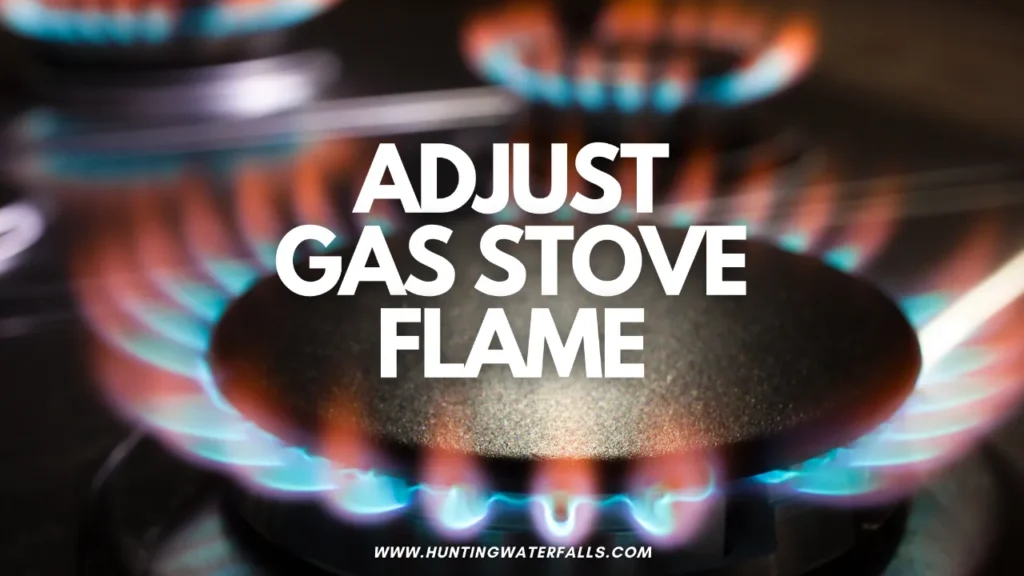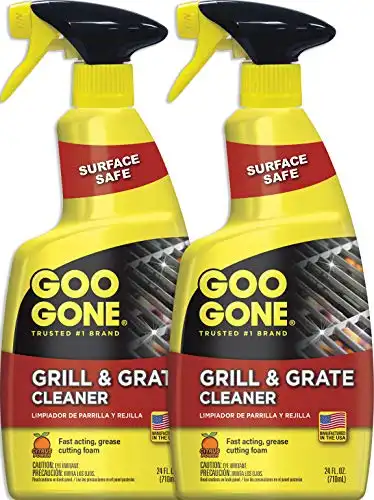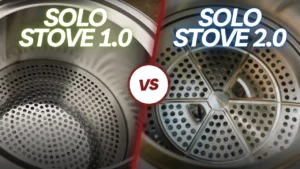I love how reliable my gas stove is but it can occasionally produce a flame that’s too large or too small. A high flame can be a fire hazard and one that’s too small won’t cook your food efficiently. It can also lead to a yellow flame which lets off more carbon monoxide which can be extremely dangerous.
Thankfully, there are several easy ways to adjust your gas stove flame if it's too big or too small.
To adjust your gas stove flame, use the stovetop knob to decrease or increase the height. If that doesn’t work, manually adjust the flame adjustment valve with a flathead screwdriver (located under the knob).
You should also check the burner cap to ensure it’s correctly aligned and inspect the burner hole for dirt or obstructions.
Before working on your gas stove, shut it off completely. Alternatively, if you don’t feel comfortable working on your gas stove, it’s best to call a professional.
1. Use the Burner’s Stovetop Knob

The most common reason a gas stove flame is too high or low is usually because you’ve adjusted it to high or low with the burner’s knob.
A healthy gas stove flame should sit about ¼ of an inch higher than the burner cap. The flame should also be a blue or blue-transparent color (a yellow or orange flame should be addressed as soon as possible as it indicates increased carbon monoxide emissions which is dangerous).
This helpful guide explains how to fix a yellow or orange flame on a gas stove.
To make the flame higher, ignite your stove and turn the burner’s knob clockwise until the flame is at your desired height. To adjust it lower turn the knob anti-clockwise.
If this doesn’t work, move onto one of the steps below.
2. Check the Burner Cap and Realign It
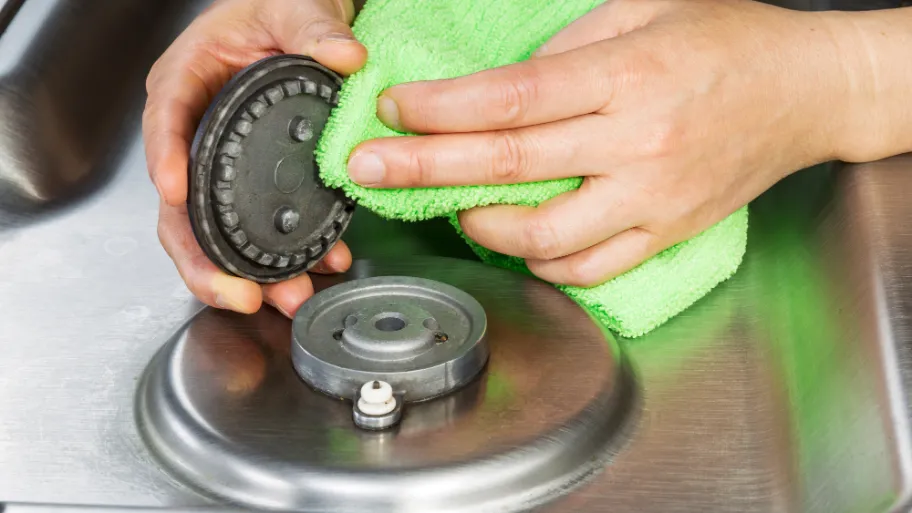
Having your stove’s burner cap correctly aligned is very important as it ensures the pilot holes aren’t covered (which allow the gas to move freely to the burner).
A misaligned burner cap can cover one of the pilot holes completely while not covering the other ones correctly, resulting in too little or too much gas to your burner and the flame height not being optimal and uneven.
Here’s how to check if your burner cap is correctly aligned:
1. Remove the stove grill so you can access the burner cap and lift it off.
2. Flip the burner cap over and check the lettered markings – they should be the same as the ones on the base as this indicates that you have the correct cap for the burner.
3. Replace the burner cap making sure that it sits flush with the base and can’t move much from side to side (this is an indication that it’s correctly aligned).
The video below shows how it’s done:
3. Check the Burner Hole for Obstructions
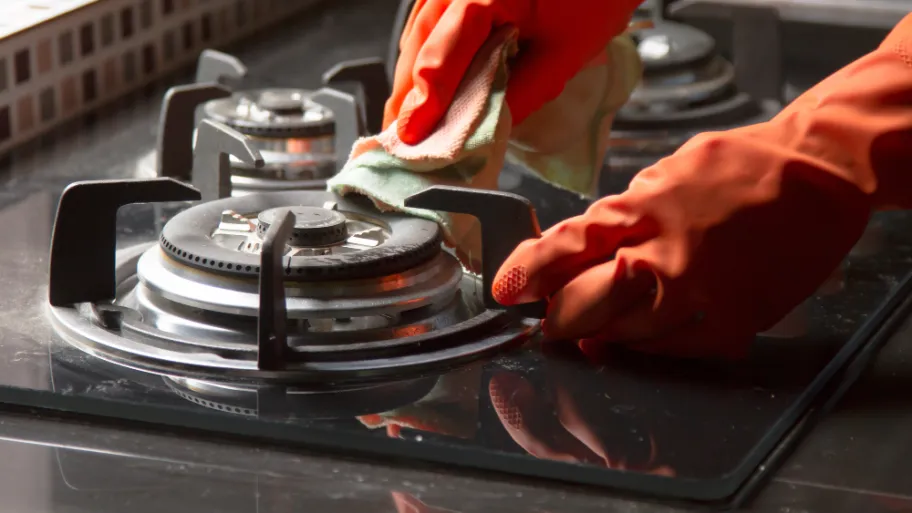
A dirty or clogged burner can prevent the gas from combusting as it should and result in smaller than usual flames.
Luckily, this is easy to fix and simply involves inspecting your stovetop for dirt, old food particles, grease and sooty debris. If you find any, give your stove a clean following the below steps:
1. Allow the gas stove to cool down before starting to clean it.
2. Gently remove any loose dirt and then use a gas grate cleaner to get rid of the baked on dirt.
Goo Gone Grill Cleaner is a great example and is quick and easy to use – simply spray it on your stovetop, wait a few minutes and then wipe foam off with a soft cloth.
Super-strength gel cleans your grill and is safe on food-prep surfaces. Quickly cleans and removes grease from your grill and grates
3. For more stubborn dirt, soak to grate and burner caps for a few hours in the solution.
Below is a video showing how to remove stubborn dirt from a gas stove:
4. Manually Turn the Flame Adjustment Valve
If your gas stove’s flame is still too high after adjusting the burner knob up and down, the next step is to manually adjust the flame adjustment screw.
You’ll need a 2mm flathead screwdriver and some pliers (optional) for this easy task. Here’s how to do it:
Features precision blade with Slotted drive tip, 2mm x 100mm shaft.
The precision zone directly above the blade provides a better feel for the rotation angle during fine adjustment work
1. Shut off your gas stove completely.
2. Gently prise off the burner knob with your fingers (it shouldn’t offer much resistance).
3. Locate the flame adjustment valve – this is the vertical metal part in the center which has a hole in the middle.
4. Use your pliers or fingers to hold the valve firmly in place.
5. Insert the flathead screwdriver all the way into the adjustment valve and gently turn it in a clockwise or counter clockwise direction depending on which way you want to adjust it.
Turning the flame adjustment valve in a clockwise direction will make it smaller while you’ll need to go in an anti-clockwise direction to make it larger.
6. Turn your stove on again, ignite the burner and check if the flame is at your desired height.
If not, shut the stove off and adjust the valve again.
Below is a visual demonstration of how to adjust the valve:
5. Check With Your Gas Stove Installer
If your gas stove is new and is meant to work on liquid propane (LP) but the flames are very high, your installer might not have converted your stove to work on the propane.
All gas stoves are designed to work with natural gas which has a lower pressure than liquid propane and this could be the reason for the high flames.
In this case, it’s best to call the person who installed your stove and have them check it.
6. Replace the Regulator
After going through the steps above and if your stove still has a low or weak flame, the issue could lie with the regulator.
This part controls the gas pressure to the burners and if it’s damaged, it often doesn’t allow enough gas to flow.
A broken regulator should be replaced and it’s advisable to get a professional to do the job because it’s located on the gas line.

